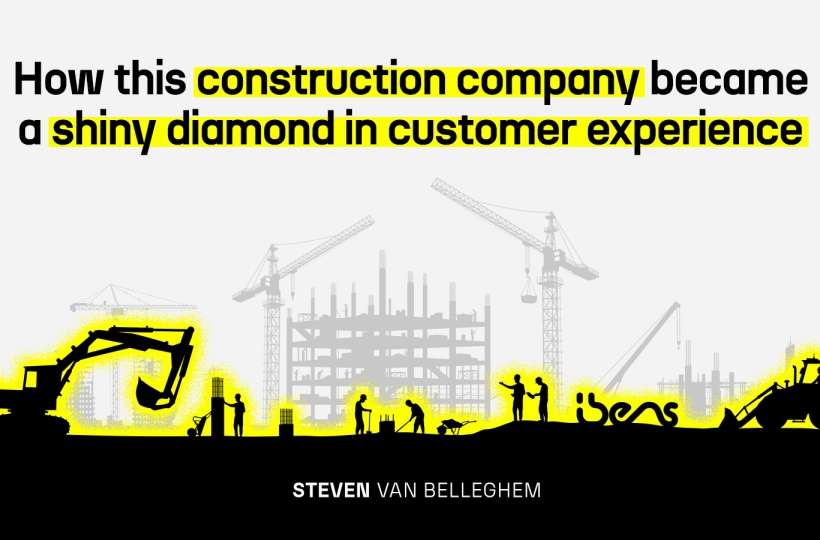How this construction company became a Shining Diamond in customer experience

A Diamond in the rough
For those who are not yet familiar with the Diamond in the rough concept, a short recap. Every company leader I meet (ok, almost every one of them), has the great intention of getting customer experience right. Yet, most companies remain diamonds in the rough in terms of customer experience: their customer experience potential is not fully exploited and they never seem to become the shiny and radiant diamond that their customers deserve. That’s why I wrote my new book: to help companies develop their full CX potential by fostering a culture that is obsessed with the customer.
Since there is no better way to explain my new concept than by showing which companies have gotten their CX culture right, I wanted to share the fantastic example of a bright diamond in the construction sector: ibens where I recently had the opportunity to give a presentation and which immediately impressed me with their customer experience. Back then, Martin Geernaart, one of ibens’ co-CEOs, asked me, ‘What do construction companies always have problems with?’ The answer was simple:
- Respecting the agreed budget (friction 1),
- Meeting the agreed timing (friction 2),
- Poor communication with the customer (friction 3).
Excelling at removing friction
Spectacularly, these three frictions are where ibens excels. Their mission statement reads as follows: realise clients’ building dreams within their available resources. Their success formula is to have the architects and engineers work with the team that maintains the client relationship. If architects are given free rein on a project, they tend to overdesign, and engineers are inclined to propose the latest technology. This translates into overspend. If all parties collaborate from the start, this source of customer friction is addressed from the outset and a ‘bickering culture’ is avoided. When the plan and budget are mutually agreed, it is difficult to assign blame to another party if something goes wrong. Consequently, the team tends to devise solutions that keep projects on track.
Respecting budget & timing
The managers at ibens prefer to have long-term contracts with their partners and they make a point of paying them correctly and on time. If something goes wrong in a project resulting in a cost overrun, ibens absorbs it. Without discussion! The job security offered to partners, combined with prompt payment their team approach translates into risk containment. This results in strong bonds between ibens and their construction partners and motivates them to adhere to project schedules. This philosophy eliminates the second friction (timing).
People from the construction industry can make a very strong counter argument: that given the price inflation of building materials and logistics challenges in recent years, these things are beyond their control.
The art of communication
But ibens also faces these difficulties. This is when the art of communication comes in. For example, if there are difficulties with supplies from China, for example, a conversation with the customer starts immediately. ‘Look, dear customer, we have a problem. The product you have chosen is currently unavailable, but here is a similar product that we can deliver to you at short notice. You can choose to stay with your first choice, but if you do, we expect delivery to be delayed by four weeks.’ This is an example of how to offer customers a choice and a solution by being proactive and transparent, two aspects of communication that customers love.
The team at ibens offers a very clear promise to customers in their mission statement. This mission is clear internally and externally. It reflects empathy and partnership radiating like a diamond between ibens, its partners and its customers.
My book Diamond in the Rough profiles companies, like ibens, that succeed in taking their customer experience to the next level and are radiant like diamonds. Clearly, the approach at ibens can be implemented anywhere and in any type of market and so I a hope that this piece and my book will inspire you to do so.